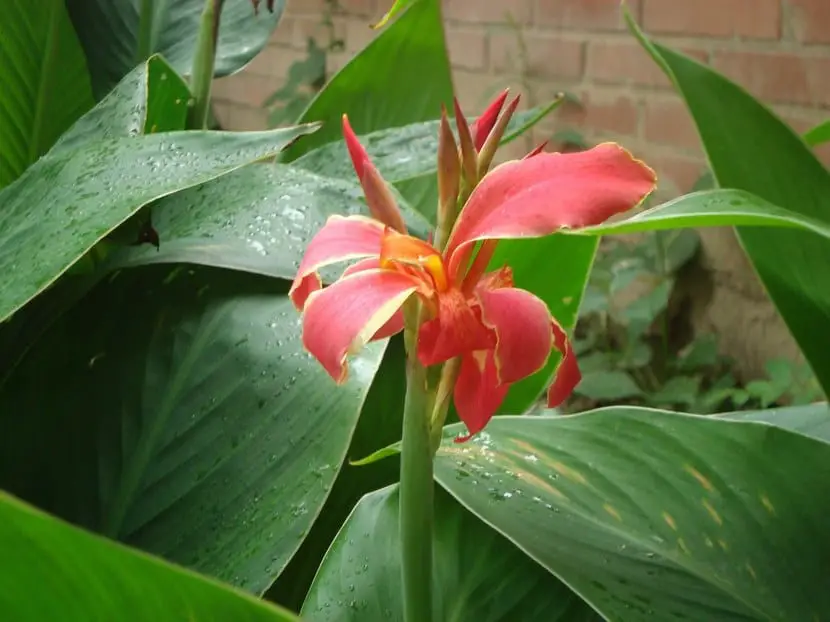
When there are large spaces to be covered, you can take into account the benefits that Caña de las Indias offers, a plant that is ideal for filling free areas due to its size.
This plant is native to Central America and it presents flowers of very cheerful colors that contrast with the green of its large leaves.
Do you want to know more about the Caña de las Indias? I invite you to investigate more about this species.
Description of the plant

The Cane of the Indians is also known as Platanillo de Cuba, Caña India or Caña coro although in some places it is named as Achira or Dragon Tongue. However, its scientific name is none other than cane indicatesa plant belonging to the familia Cannaceae and presents different varieties.
It is a erect stem species which, due to its appearance, is used by landscapers to create an isolated corner, often combining different varieties. The leaves of this plant are large and can be green, purple, reddish or variegated while the flowers are presented in red, orange, yellow or pink tones, so it is possible to make different combinations, all with very good visual results.
The thing to keep in mind is that the flowering occurs in summer and well into fall so it is that during the rest of the year at a visual level you will only be able to appreciate a plant with green leaves.
Care and maintenance

For the plant to shine, the ideal is to offer it a sun to semi-shadow environment and a space with temperatures that are not less than -3 degrees below zero, as the climate of origin of this species must be taken into account. Otherwise, the rhizomes will have to be removed after flowering to save them and plant them when it is the sowing time, in late winter or early spring.
The watering must be abundant and regular although it does not demand too much with the soil, adapting to the prevailing conditions, even if we speak of a poor soil. In that case, it is advisable to add compost, manure or a fertilizer to enrich it. A fertilizer is also advised during the growing season.
Among the plagues and diseases most frequent of the Caña de las Indias are the rot, Negron, virus infections and attack by aphids, mealybugs, worms and stem borers (butterflies and caterpillars).
